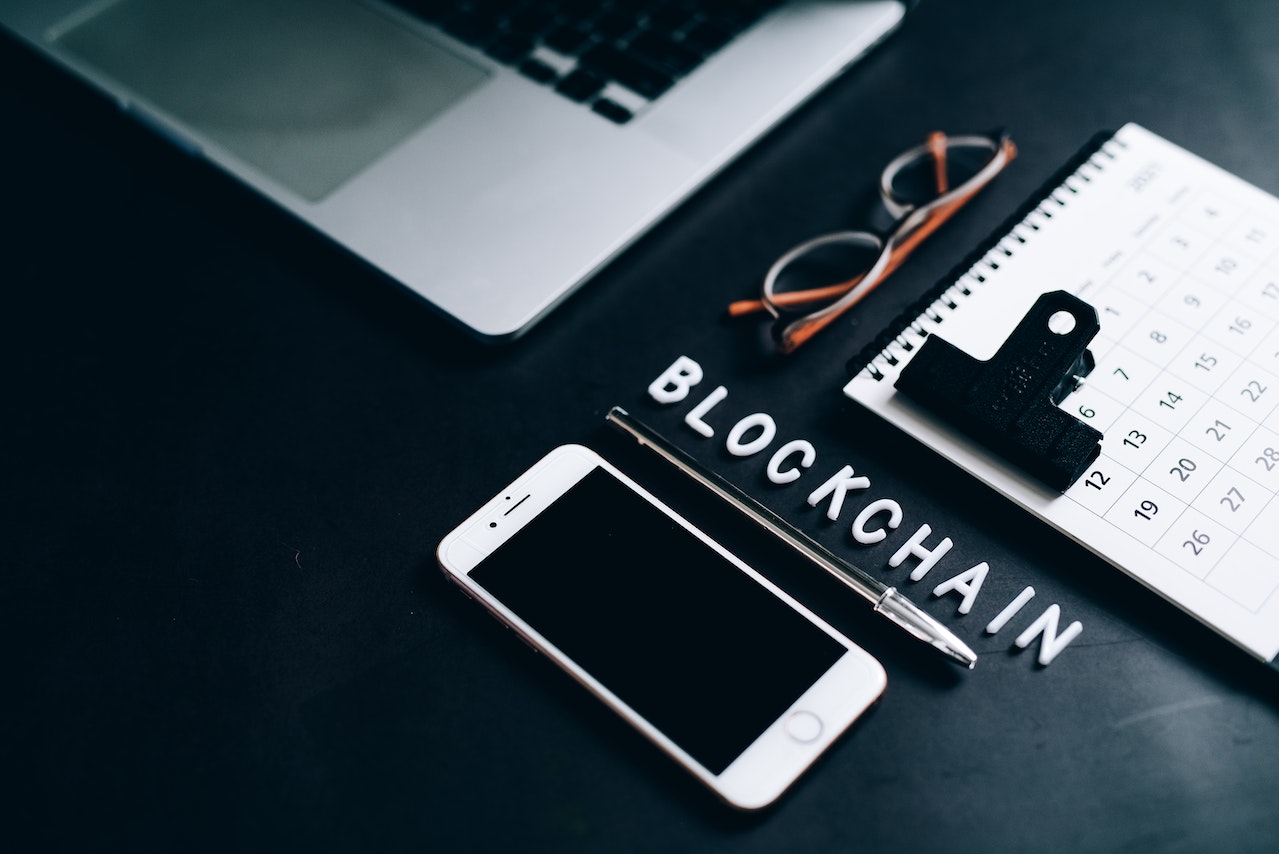Blockchain and IOT
Published

Blockchain is a decentralized database consisting of a chain of blocks linked to each other. Each block contains a list of transactions and a hash value of the previous block. This ensures the integrity of the data and makes manipulation more difficult.
How does blockchain work?
When a transaction takes place, it is verified and confirmed by a network of computers. Once the transaction is confirmed, it is written to a block and given a hash value. This hash value is then included in the next block to ensure the chaining of the blocks. Each block also contains the hash value of the previous block, making manipulation difficult.
Types of Blockchains
There are two types of blockchains: public and private. Public blockchains are accessible and transparent to everyone, while private blockchains are only accessible to selected participants and offer more control.
What is IOT?
Definition
The Internet of Things (Internet of Things, IoT ) is a concept in which physical devices and objects are connected to the Internet and can communicate with each other. These devices are equipped with sensors, actuators and wireless communication technologies that allow them to collect, exchange data and perform actions without direct human intervention.
Here are some important aspects of the Internet of Things:
- Devices and objects: In IoT, almost all types of devices and objects can be connected to each other. These include smartphones, household appliances, vehicles, industrial machines, wearables, sensors in the environment and much more.
- Connectivity: IoT devices use various communication technologies, such as Wi-Fi, Bluetooth, Zigbee, LoRaWAN or cellular, to send and receive data.
- Data processing and analysis: IoT devices generate a huge amount of data. The collected data can be analyzed in real time or retrospectively to gain valuable insights and derive actions.
- Areas of application: IoT has applications in various areas, including smart home, Industry 4.0, healthcare, agriculture, transport and logistics, smart cities, environmental protection and more.
- Benefits: The Internet of Things offers a variety of benefits including improved efficiency, automation of processes, better decision making through data analytics, optimized resource utilization, increased security and convenience for end users.
- Challenges: With IoT comes challenges such as privacy and security concerns, interoperability between different devices and platforms, energy consumption and scalability.
IoT has the potential to significantly change our daily lives and the way companies and organizations work. However, the increasing penetration of IoT devices and applications also requires consideration of the above challenges and the development of appropriate security and privacy measures to realize the full potential of the Internet of Things.
How does IoT work?

IOT / Quelle: pexels.com
The Internet of Things (IoT) works by connecting physical devices and objects that are equipped with sensors and actuators and can exchange data via wireless communication technologies. The basic functionality of IoT includes the following steps:
- Collect sensor data: IoT devices are equipped with sensors that can collect various types of data such as temperature, humidity, motion, light, pressure, location, sound, and more. These sensors are able to monitor the physical environment and generate measurements.
- Data transmission: The data collected is transmitted to the Internet or other networks via wireless communication technologies. These include Wi-Fi, Bluetooth, Zigbee, LoRaWAN, cellular and other wireless protocols.
- Data processing and analysis: The transmitted data is processed and analyzed in the cloud or on local servers. The data can be analyzed in real time or retrospectively to identify patterns, trends and relevant information.
- Actions and control: Actions can be triggered based on the analyzed data. This can be the automatic control of the devices themselves or other devices to perform a specific task or produce a response to a specific situation.
- User Interaction: IoT also allows users to interact with the devices. Users can send commands to the IoT devices or view the devices' status and data through smartphone apps or other interfaces.
- Integration with other systems: IoT systems can also be integrated with other enterprise applications or platforms to enable seamless communication and automation.
It is important to emphasize that IoT encompasses a wide variety of use cases and technologies. How it works can vary depending on the specific area of application and the technologies used. From smart home devices to industrial IoT applications to smart cities and environmental sensors, IoT offers diverse opportunities to connect the physical world with the digital world and create innovative solutions for a wide range of industries and applications.
Applications of IOT
IOT is used in various areas such as smart homes, smart cities, Industry 4.0, healthcare and agriculture. Examples of IOT applications include smart thermostats, connected transportation systems, predictive maintenance in industry, and remote patient monitoring. The Internet of Things (IoT) is used in a variety of applications and industries. Here are some examples of applications of IoT:
- Smart Home: Smart homes use various IoT devices to automate and improve the living environment. Examples include smart thermostats, smart lighting systems, connected security cameras, smart plugs and voice-controlled assistants.
- Industry 4.0: In industry, IoT is used as part of the so-called fourth industrial revolution (Industry 4.0) to optimize production processes, improve machine maintenance and increase efficiency in manufacturing.
- Smart Cities: Smart cities use IoT to optimize urban infrastructure and improve the quality of life of citizens. Examples include intelligent traffic control systems, connected street lights, waste disposal systems, public safety systems and environmentally friendly technologies.
- Healthcare: In healthcare, IoT enables patient monitoring, remote monitoring of medical devices, real-time transmission of health data, and assistance in diagnosing and treating diseases.
- Agriculture: In agriculture, IoT can be used to monitor fields, livestock and farm machinery. This enables more precise irrigation, optimized fertilization, predictive maintenance of machines and better harvest planning.
- Environmental Protection: IoT is also used for environmental protection applications such as air and water quality monitoring, wildlife observation, and pollution detection.
- Transportation and Logistics: IoT applications are used in transportation and logistics to develop intelligent transportation systems that optimize traffic flows, improve safety, and make supply chains more efficient.
- Wearables and health monitoring: Wearable devices such as smartwatches and fitness trackers use IoT technology to collect health data such as heart rate, steps and sleep patterns, giving users insights into their health.
These are just a few examples of the diverse applications of IoT. The possibilities are almost endless, and IoT is expected to play an important role in more and more areas of our lives in the coming years. Connecting physical devices and leveraging data can help streamline processes, increase efficiency and improve people's lives.
How can blockchain and IOT work together?
Blockchain as a security solution for IOT
Because IOT devices are often connected via the Internet, they are vulnerable to cyberattacks. Blockchain can be used as a security solution for IOT by ensuring the integrity of data and making manipulation difficult.
Blockchain as a data management tool for IOT
Blockchain can also be used as a data management tool for IOT by ensuring data integrity and security and improving data analysis and processing.
Application examples for blockchain and IOT
Examples of blockchain and IOT collaboration include tracking supply chains, monitoring energy consumption and production, managing medical data, and securing connected vehicles.
What are the challenges in integrating blockchain and IOT?
Security risks
Although blockchain can be used as a security solution for IOT, there are still security risks that need to be taken into account, such as attacks on the network or vulnerabilities in the implementation.
Scalability
Blockchain and IOT integration requires high scalability as IOT devices can generate a large number of transactions. The scalability of blockchain networks therefore needs to be improved to meet the needs of IOT.
Interoperability
Interoperability between different IOT devices and blockchain networks can be challenging as they may use different protocols and standards.
Future prospects for blockchain and IOT
Forecasts and trends
Based on the developments and discussions up to September 2021, these are possible forecasts and trends for the interaction of the Internet of Things (IoT) and blockchain:
- Data security and privacy: Integrating blockchain with IoT can help address privacy and security concerns. By using blockchain technology, IoT devices can securely communicate with each other, data is encrypted and stored transparently in a decentralized, immutable database.
- Identity Management: Blockchain can be used for secure, self-sovereign identity management in the IoT. Users can maintain control over their personal information and manage it securely and privately, reducing reliance on centralized identity providers.
- Interoperability: Blockchain can improve interoperability between different IoT devices and platforms by enabling standardized data exchange. Smart contracts can be used to execute automated actions between devices when certain conditions are met.
- Microtransactions and payment processing: Blockchain can enable microtransactions in IoT, where devices can exchange small amounts of resources or data in real-time. This could be useful, for example, in M2M (machine-to-machine) communication.
- Supply Chain and Logistics: Blockchain can improve transparency and traceability in the supply chain by tracking the precise location and condition of products in real time. This could reduce fraud and improve efficiency.
- Energy efficiency and sustainability: IoT and blockchain combined can help improve energy efficiency and use renewable energy sources more effectively. Smart grids can be optimized by integrating IoT devices and blockchain technology.
- Autonomous vehicles and transportation: IoT and blockchain can play a role in the development of autonomous vehicles by enabling communication and coordination between the vehicles and the infrastructure. Blockchain can also help ensure the security and integrity of vehicle data collected.
It is important to note that integrating IoT and blockchain also presents challenges such as scalability, energy consumption, and interoperability. The actual development and implementation of these trends depend on continuous research and collaboration between different players and industries.
Potential for innovation
The interaction of blockchain and the Internet of Things (IoT) offers enormous potential for innovation and transformative applications. Here are some areas where this combination can create breakthrough opportunities:
- Security and privacy: Integrating blockchain with IoT enables secure and transparent data transmission and storage. The decentralized nature of blockchain helps minimize security threats and address privacy concerns.
- Identity management: Blockchain can be used in the IoT sector for secure and decentralized identity management. Users and devices can store and verify their identities on the blockchain, increasing trust in device communications.
- Interoperability: Blockchain can help improve interoperability between different IoT devices and platforms. Smart contracts enable automated actions based on predefined conditions, facilitating collaboration between devices.
- Supply Chain and Logistics: Blockchain combined with IoT can improve transparency and traceability in the supply chain. This creates the potential to reduce fraud, optimize production processes and ensure product quality.
- Smart Cities: By combining IoT and blockchain, smart cities can be created in which networked devices and infrastructures communicate and cooperate efficiently. This can lead to improved urban planning, sustainable resource management and a better quality of life for residents.
- Autonomous vehicles: IoT and blockchain can play an important role in the development of autonomous vehicles by improving communication between vehicles and infrastructure and increasing security through trusted data exchange systems.
- Energy efficiency and sustainability: The combination of IoT and blockchain can help promote energy efficiency and renewable energy. Through intelligent power grids and decentralized energy generation, energy sources can be used more efficiently and power supply networks can be optimized.
- Healthcare: Blockchain can enable secure and private sharing of health data in healthcare, while IoT devices improve patient monitoring and care. This can lead to personalized medicine and better patient care.
It is important to emphasize that the successful implementation of these potentials also presents challenges, such as the scalability of blockchain networks, energy efficiency, data protection and the need for interoperability between different technologies and platforms. However, companies, governments and technology developers are constantly working to overcome these challenges to realize the full potential of blockchain and IoT and create innovative solutions for a wide range of industries and applications.
Outlook for development
The development of blockchain and IOT will continue to advance in the coming years as more and more companies and organizations realize the benefits of these technologies. It remains to be seen what new applications and innovations will emerge in the future.








